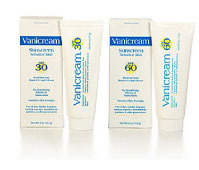Sunlight Exposure, Allergies & Asthma

After listening to some news reports, you might get the idea that sunlight is a dangerous carcinogen. Not so! While it’s true that overexposure to sunlight may contribute to future skin cancer, it’s also true that healthy exposure to sunlight actually decreases cancer rates for the deadliest types of cancer.
In 2002, the medical journal Cancer published a study showing a close inverse correlation between cancer mortality and levels of ultraviolet B (UV-B) light. In other words, people who get adequate exposure to sunlight are less likely to die from cancer. In the United States, mortality rates for several types of cancer are approximately twice as high in northern, highly urbanized states than in southern, more rural states.
Sunlight then, is not dangerous; it is a key component of good health! Sunlight is not only the primary source of energy for life on our planet, but it also produces vitamin D in the human body. Vitamin D has been shown to improve diabetes, heart disease, arthritis, depression, obesity, autoimmune disorders, and a host of other diseases.
Healthy sunlight exposure also appears to improve allergies and asthma.
What is Healthy Sunlight Exposure?
Simply put, you should not burn in the sun. For most people, fifteen to twenty minutes of sunlight exposure three times a week is adequate for health benefits. People with darker skin may need more exposure.
You do not need to sunbathe for extended periods of time; this is what causes damage that could lead to skin cancer. On the other hand, you should not stay indoors all the time and totally avoid sunlight.
If you’re going to be in the sun for a short period time, you probably don’t need sunscreen. Most sunscreens consist of toxic ingredients that do more harm than good. However, if you’re planning to be outdoors for an extended period of time and you’re worried about getting a sunburn, use Vanicream sunscreen. It’s hypoallergenic, non-comedogenic (won’t clog pores), and doesn’t contain all the toxic chemicals found in most sunscreens.
Sunlight & Allergic Disease
Last year, a study in the Journal of Allergy and Clinical Immunology found that southern states have the fewest Epipen prescriptions, while New England states have the most. (The Epipen contains injectable epinephrine and is necessary for people who have severe, life-threatening allergies.) Researchers hypothesize that since southern states have more year-round sunlight, people in those states have a lower incidence of allergic disease because of higher Vitamin D levels.
In 2006, Australian researchers found that exposure to sunlight for 15 to 30 minutes before exposure to allergens significantly reduces the development of asthma-like symptoms! (So if you have a child with asthma, don’t let him or her sit indoors and play video games all summer even if the game system is a fitness-conscious Wii!)
At the 2008 annual meeting of the American Academy of Allergy, Asthma and Immunology (AAAAI), Dr. Matthias Wjst explained that dietary sources of vitamin D are not ideal.
It is best to get your vitamin D from natural sunlight exposure, as opposed to dietary supplements.
In fact, dietary supplementation of vitamin D may be related to the increase in allergies and asthma in recent years.
 Early-life vitamin D3 dietary supplementation has been linked to asthma. Dr. Wjst also pointed out that inhabitants of the islands of Tristan da Cunha in the South Atlantic Ocean, have a very high incidence of allergies and asthma – and they consume a very high amount of dietary vitamin D from sea bass.
Early-life vitamin D3 dietary supplementation has been linked to asthma. Dr. Wjst also pointed out that inhabitants of the islands of Tristan da Cunha in the South Atlantic Ocean, have a very high incidence of allergies and asthma – and they consume a very high amount of dietary vitamin D from sea bass.
Dr. Wjst proposed that oral vitamin D supplementation could be a not-so-visible component of the hygiene hypothesis. The “hygiene hypothesis” is a hot topic among allergists; it suggests that the prevalence of allergic diseases in modern, developed societies is related to our overly hygienic lives. For example, kids who grow up on farms usually have lower rates of allergies and asthma. However, if a child stays indoors in a sterile environment all the time, then his immune system is never challenged and never has a chance to “learn” what it should attack. Thus, the immune system overreacts to substances like pollen.
Dr. Wjst suggested that perhaps oral vitamin D supplementation early in life leads to fewer infections and therefore more allergies; this is another way of looking at the hygiene hypothesis.
Dr. Margherita Cantorna, PhD, also presented evidence for the role of vitamin D in asthma and autoimmune diseases. Vitamin D deficiency exacerbates autoimmune diseases like multiple sclerosis, lupus, arthritis, type I diabetes, and inflammatory bowel disease. Also, inflammatory bowel disease is much more prevalent in urban areas, northern areas, and developed countries. Vitamin D seems to normalize T-cell function in the immune system, says Dr. Cantorna.
 So… it appears that too much vitamin D in the diet may increase the incidence of allergic disease; however, too little vitamin D can make allergic diseases worse.
So… it appears that too much vitamin D in the diet may increase the incidence of allergic disease; however, too little vitamin D can make allergic diseases worse.
Here’s the key point: People generally don’t get hyper-doses of vitamin D by spending time in the sun; however, it’s easy to get hyper-doses of vitamin D through oral supplementation. That’s why it’s best to get your Vitamin D through sunlight rather than supplements.
Dr. Thomas A.E. Platts-Mills, former President of the AAAAI and one of the world’s preeminent allergy researchers, has also alluded to the connection between Vitamin D and allergies.
Dr. Platts-Mills believes that the hygiene hypothesis does not offer a full explanation. He thinks that the rise in allergies and asthma is due to the fact that we have essentially become an indoor species: “Yes, you need cleanliness in order to get an allergy, but the rise in asthma from 1960 onward, which was occurring among allergic patients, is much more likely to be due to the major change in lifestyle that occurred then, which is that we moved indoors and have essentially become an indoor species. In the 1950s, children would spend three hours a day outdoors playing. From about 1960 onwards, that’s progressively decreased so that now it’s unusual for children to go outdoors. The outdoor exposure could be beneficial because it allows the children to open up their lungs and exercise their lungs; it could be beneficial because they don’t get so fat; it could be beneficial because their environment is better; or even, as has recently been suggested, because they get more exposure to the sun and therefore aren’t vitamin D deficient.”
So… If you’re the parent of an allergic or asthmatic child, make sure that your child plays outdoors and gets plenty of sunlight this summer! (And don’t forget to expose yourself to the sunlight, too.)

